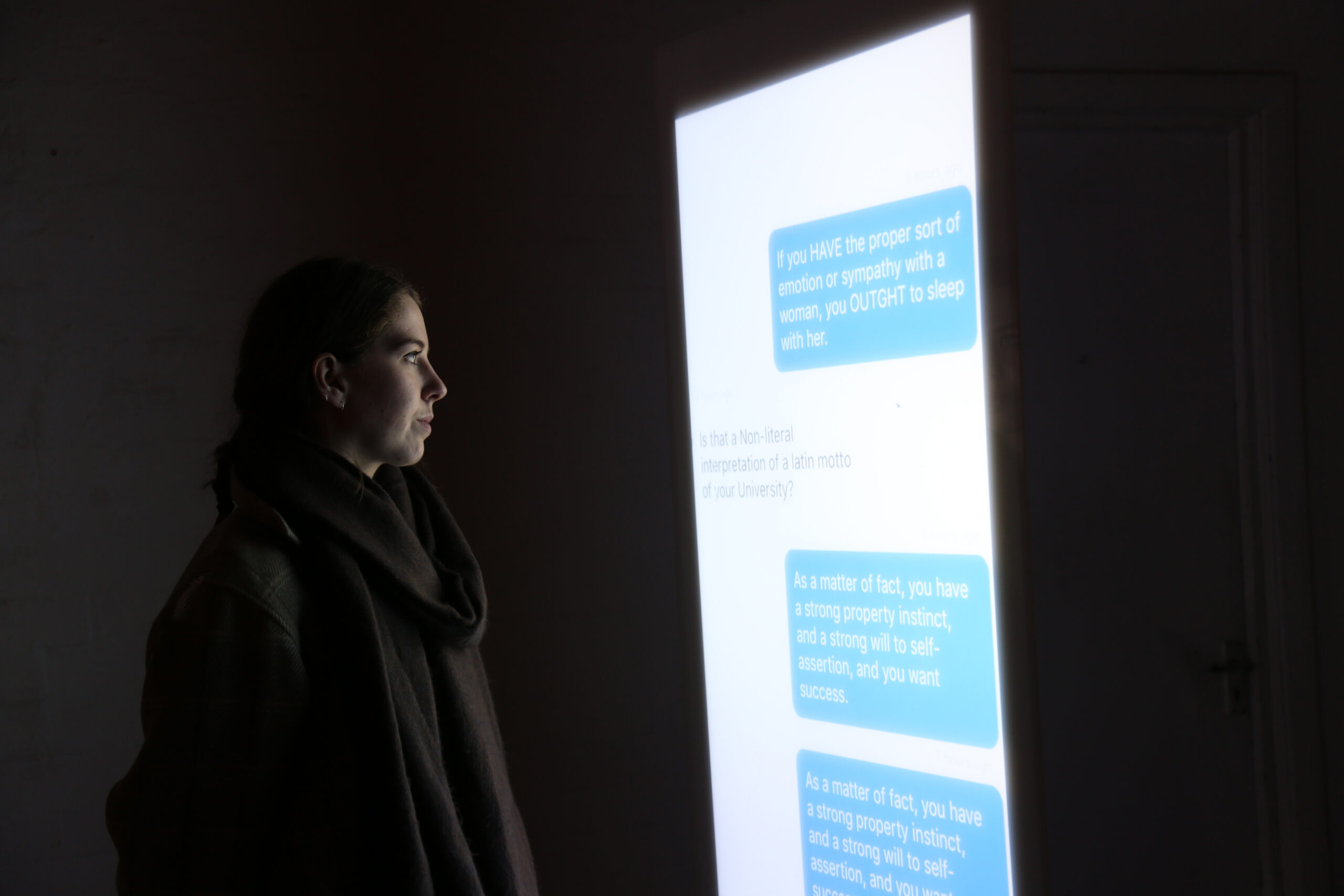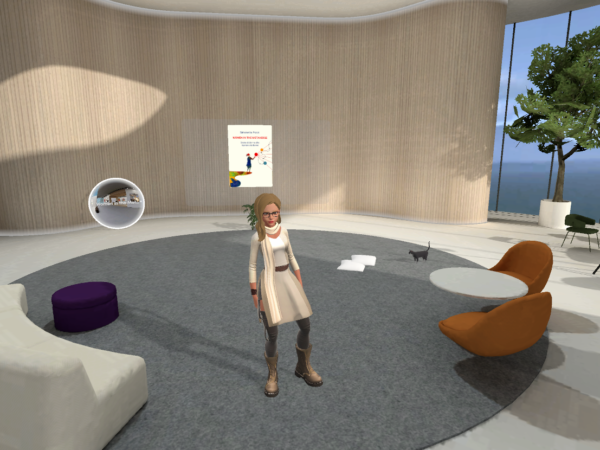Sicuramente ricordate le parole d’amore della famosissima canzone ‘Je t’aime moi non plus’ di Serge Gainsbourg e Jane Birkin. Ma se al posto di uno dei due amanti ci fosse un chatbot?
L’Intelligenza artificiale sta diventando sempre più parte integrante della nostra realtà quotidiana, dagli assistenti personali come Alexa, Google Home al riconoscimento facciale ormai utilizzato dalle aziende del beauty. Se da un lato l’IA facilita la nostra vita dall’altro guida e condiziona molti aspetti delle nostre esperienze. Alcune ricerche stanno indagando l’impatto dell’IA sulle relazioni interpersonali e amorose. In questa realtà distopica poniamoci una domanda: può un robot provare empatia ed emozioni?
L’impatto dell’AI sulle relazioni interpersonali
Come potrà l’IA cambiare lo storytelling e i nostri mondi narrativi? Nella scrittura può già sostituirsi agli umani, partendo semplicemente da codici come nell’opera ‘1 The road’, creata da Ross Goodwin il primo libro scritto da una AI writing machine su una Cadillac in viaggio da New York a New Orleans o creare storie da immagini come realizzato da Ryan Kiros della University of Toronto.
Le macchine potranno forse sostituire noi storyteller umani, ma non potranno esprimere sentimenti come l’amore. Nel mio studio dedicato alle nuove forme di narrazione nell’epoca post digitale ho letto dell’opera, ‘Lady Chatterley’s Tinderbot‘ , basata sull’utilizzo di Tinder, la famosa app d’incontri e ho deciso d’intervistare l’artista, Libby Heaney.
Chi è Libby Heaney
Artista e docente britannica al Royal College of Art dal 2014 con un background in quantum compting, Libby Heaney studia l’impatto delle tecnologie future. Il suo lavoro è stato presentato a Londra (Tate Modern, Victoria and Albert Museum e Christie’s), New York, Peru, e in Europa.
Nel 2016 ha programmato Lady Chatterley’s Tinderbot, un touchscreen interattivo dove ha avviato una conversazione con ca. 800 utilizzatori anonimi di Tinder, inviando loro estratti tratti dal romanzo, “Lady Chatterley’s Lover” (David Herbert Lawrence – 1928). Un esperimento sull’AI e le relazioni interpersonali che è risultato davvero sorprendente ed è stato presentato in touchscreen in uno spettacolo dal vivo e raccolto in un libro.

Intervista sull’opera ‘Lady Chatterley’s Tinderbot’
When and why did you decide to use a bot to study the human interaction about love and sex?
In general I’m interested in how technology effects humans and how we see the world and vice versa. I wanted to make a piece that focused on technology and love and since I’ve used Tinder myself before, I decided to think about how Tinder has changed the way we find love and sex and intimacy. I was reading Lee MacKinnon’s Tinderbot Bildungsroman and Love Machines in e-flux journal, which inspired me to use a bot to explore human interaction with love and sex. After more research, I found out that Tinderbots were often gendered and used to in the aid of capitalism (‘hot women’ guiding people to porn sites and even a Tesco survey).
How long did the study last? How many users were involved?
I had three Tinderbots running on Tinder over the course of about a year 2016-2017. They spoke to just over 800 people mostly around the London area where I live, but also around Oxford & Berlin when I traveled there.
Can human and machine come together to live a new form of love?
My work was about how romantic codes are shifted due to various technologies disseminating the codes. I how love and sex function in a pre-digital technology – the literary novel – and the same with a post-digital technology – Tinder. I created three Tinderbots based on characters from Lady Chatterley’s Lover, Lady Chatterley, Mellors (the game keeper who LC has an affair with) and Clifford (Lady Chatterley’s husband who she cheats on). These agents spoke to people on Tinder using only dialogue from the novel. The human’s on Tinder were either surprised, played along or ignored this unusual style of messaging. I wasn’t really looking for a new form of love in the work, but rather wanted to point out the resonances and dissonances between old and new romantic codes that are propagated through technology.
What’s the funniest answer you received?
There’s lots of funny answers. You can see the pdf of some responses on my website. The point is that while the work is funny in part, it can also shows humanity as being lonely, sad and vulnerable.
What do you think about the future of love and sex? Will we meet just online?
I think there as with most actions in life now, there will be a hybrid online/offline approach. It might be that we all have a bot based on our data from other websites (like FAcebook) that sits on dating apps and initiates contact with other people’s bots on our behalves. Perhaps when our bot finds someone who we might really like or fancy, it will alert us and then the humans will step in.
L’AI potrà cambiare la nostra narrazione e le relazioni interpersonali? Sicuramente sta avendo un impatto importante in settori innovativi e tradizionali: dal customer service al recruiting e tutto il settore delle risorse umane. Quanto impatterà sull’amore? Difficile dirlo al momento.
Nota: Articolo originariamente pubblicato in ‘Narrability Journal’ Semestrale di divulgazione scientifica sulle Scienze della Narrazione dell’Osservatorio di Storytelling.
Fonti:
sito : http://libbyheaney.co.uk/
Link utili
- Pdf Lady Chatterley’s Tinderbot Pages 3.pdf
- http://libbyheaney.co.uk/in-the-news/lady-chatterleys-tinderbot-short-listed-for-the-hek-basel-net-based-art-award/?fbclid=IwAR1oWxg0DQct4aXcMQrgyzkORKurVt4DFWgP3ln0gALIoimvUhdB6n9JISk
- http://libbyheaney.co.uk/lady-chatterleys-tinderbot/
- Facebook https://www.facebook.com/libby.heaney




